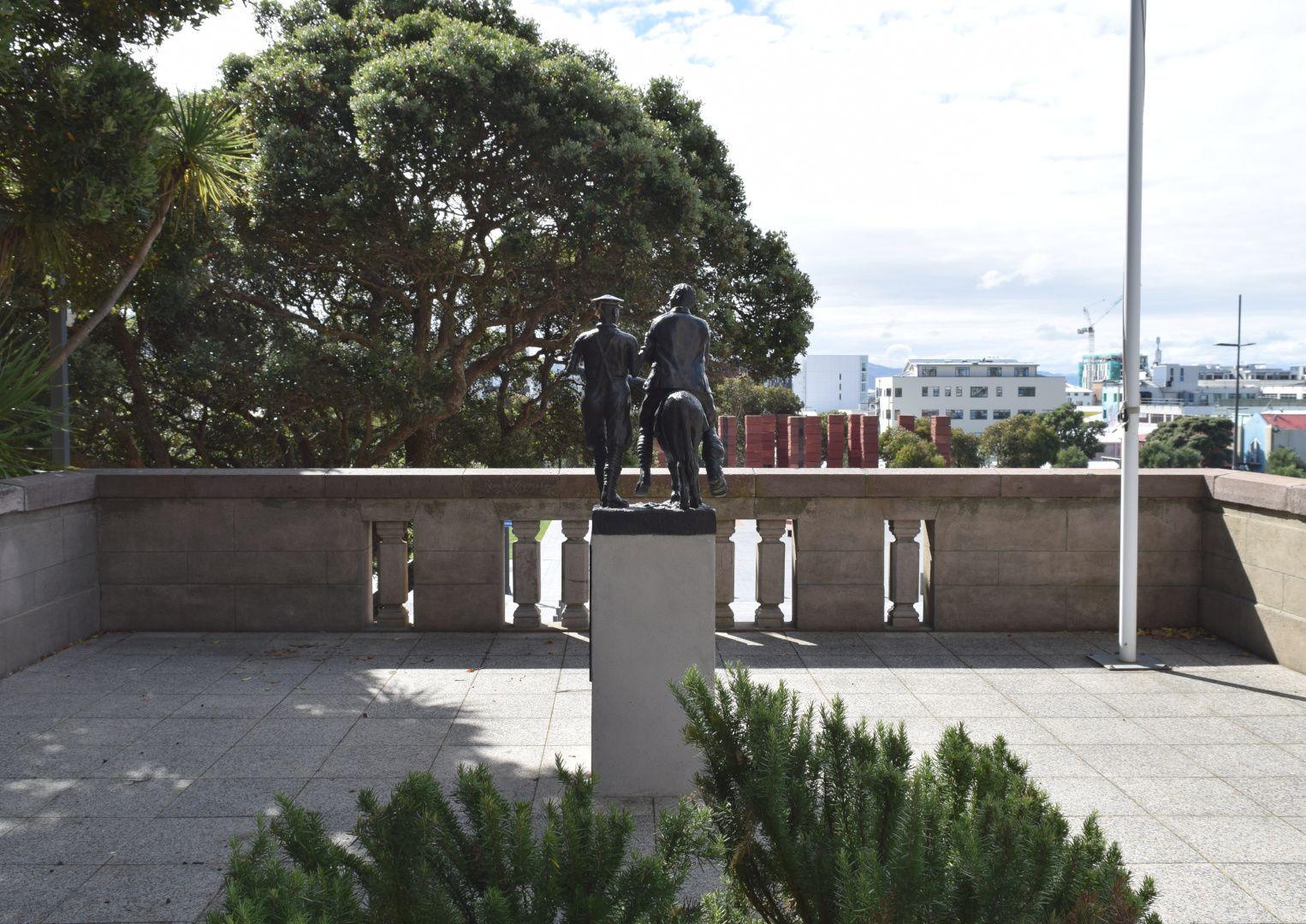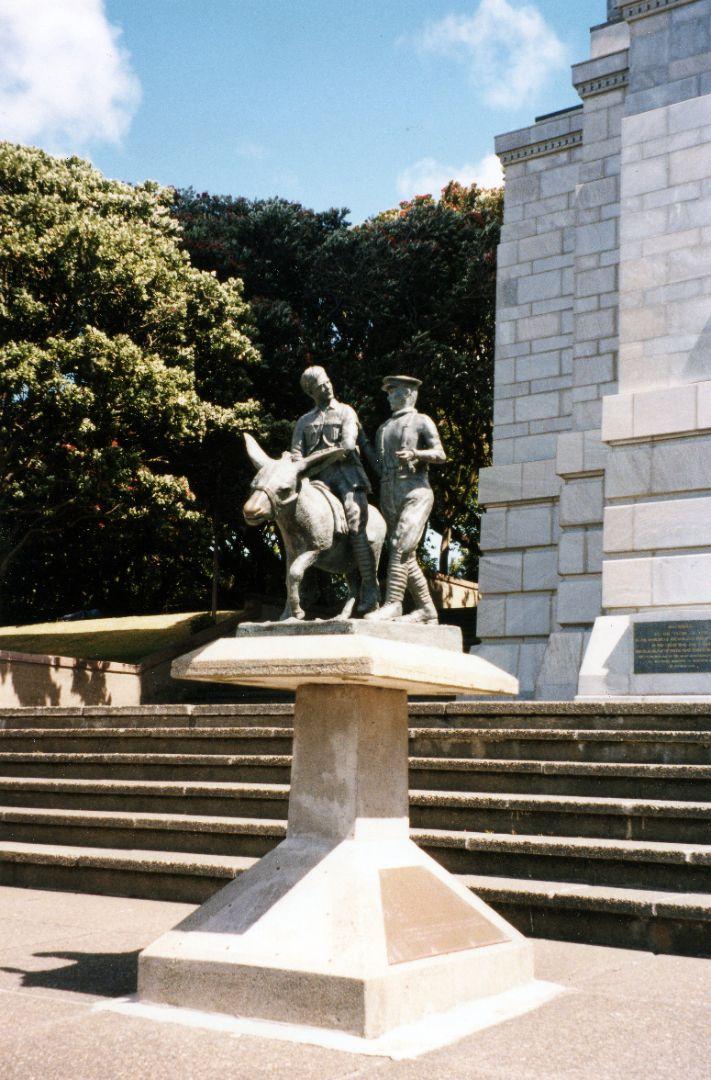The man with the donkey
Paul Walshe
Type
- Sculpture
Medium
- Bronze
- Concrete
Dimensions
- H850 x W510 x D750mm

Paul Walshe, ‘The man with the donkey’ (1990), Pukeahu National War Memorial Park, Te Whanganui-a-Tara Wellington.
Image: Bronwyn Holloway-Smith, Public Art Heritage Aotearoa New Zealand, 2024





- DETAILS
- MAP
Description
In 1915, Australian soldier John Simpson Kirkpatrick (‘Simpson’) commandeered a local donkey in Gallipoli, nicknamed it ‘Murphy’, and used it to evacuate wounded and sick soldiers from the front line in ‘Shrapnel Valley’, thus establishing the only medical ambulance service available at Gallipoli.
Simpson was killed in May 1915, however the donkey-ambulance practice he started continued to be used by New Zealand stretcher bearer Richard Alexander (Dick) Henderson and others in the New Zealand Medical Corps. Thus, the image of a person transporting wounded soldiers on donkey-back became a symbol of the bravery of stretcher bearers.
This bronze sculpture and incorporated plinth commemorates the 75th Anniversary of the Gallipoli landings on 25 April 1915, and is a tribute to the medical personnel, stretcher bearers, ambulance drivers, donkeys, and other animals who have served and died alongside New Zealand service personnel in war.
Walsh is said to have modelled the sculpture on a photograph (possibly taken by Sergeant James Gardiner (Jas) Jackson of the New Zealand Medical Corps) of a painting by Horace Moore-Jones who sketched the scene in pencil and watercolour at Gallipoli. Walsh also incorporated his own memories into the work.
Henderson survived the Gallipoli campaign and went on to serve in France. He was awarded the Military Medal for Gallantry during the battle of the Somme in September 1916. He was wounded in action at Passchendaele on 12 October 1917 and, after gas poisoning, returned to New Zealand in early 1918. He died on 14 November 1958 aged 63 years.
The sculpture was unveiled on Poppy Day (20 April 1990) by Ross Henderson, son of Richard Henderson, and in the presence of one of his father’s fellow gallipoli stretcher bearers William (Bill) White. It was originally located directly outside the doors to the National War Memorial, but has since been re-sited to the west, and placed on a new plinth.
The National War Memorial has a Heritage NZ Category 1 listing. This sculpture is listed as a Notable Feature, along with Lyndon Smith’s bronze sculpture of a Mother & Child Group in the Hall of Memories.
See also:
- Maribeth Coleman, ‘Simpson and Henderson, Paul Walshe’ 1980. Wellington City Libraries Recollect page.
